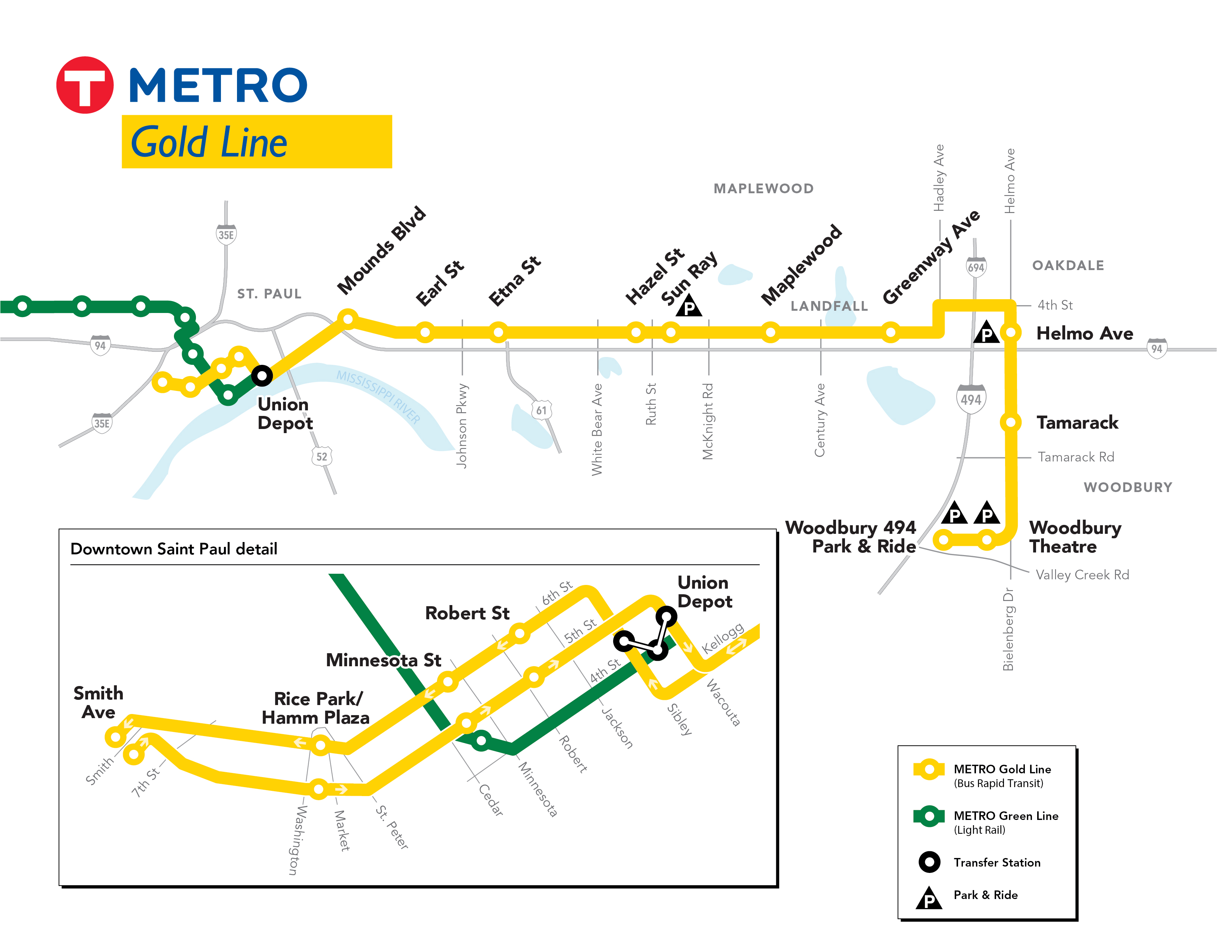 Following an important approval from the Federal Transit Administration (FTA), the METRO Gold Line is now cleared to enter the engineering phase of a federal program that could pay for 45% of the project’s cost. The approval allows the engineering team to complete the work necessary to develop the construction plans. The 10-mile long Bus Rapid Transit (BRT) line will run parallel to I-94, operating primarily within dedicated, bus-only lanes. This approval allows the engineering team to complete the work necessary to develop the construction plans.
Following an important approval from the Federal Transit Administration (FTA), the METRO Gold Line is now cleared to enter the engineering phase of a federal program that could pay for 45% of the project’s cost. The approval allows the engineering team to complete the work necessary to develop the construction plans. The 10-mile long Bus Rapid Transit (BRT) line will run parallel to I-94, operating primarily within dedicated, bus-only lanes. This approval allows the engineering team to complete the work necessary to develop the construction plans.
“This project is a great example of how local, regional and national governments can work together to connect people to jobs and opportunities,” said Metropolitan Council Chair Charlie Zelle. “When it begins running, the Gold Line will be one of the top ten busiest bus lines in the Twin Cities’ metro area, providing trips to work, school, entertainment and shopping. Our project team worked closely with the FTA to ensure that ridership projections are as accurate as possible and that the project’s finances are strong. We’re excited to enter the next phase of the project.”
When it’s complete the 10-mile long BRT line will run parallel to I-94 operating primarily within dedicated, bus-only lanes. It will connect Saint Paul, Maplewood, Landfall, Oakdale and Woodbury, serving key destinations like 3M’s campus, Sun Ray Shopping Center and a variety of existing and proposed housing and retail options close to station areas. METRO Gold Line BRT will be the Minnesota’s first rapid bus line to operate primarily within bus-only lanes.
“It’s going to run every 10 to 20 minutes all day long, and it will move riders efficiently to their destinations. And we look forward to seeing the Gold Line in action in dedicated lanes on the north side of I-94 which will improve speed and reliability,” said Zelle. “People who live on the east side of Saint Paul will have access to excellent transit service that will connect them to thousands of jobs.”
The project is also stimulating additional public and private investment. Many amenities like bridges, bike paths and parking will benefit everyone along the line, even if they don’t regularly use transit. In some cases, amenities like parking facilities and bike paths drive up ridership and are eligible for matching federal funding. In other instances, counties and local communities can coordinate locally funded work to be constructed with the project more cost effectively with less disruption to the community.
Zelle points to the Gold Line BRT as one of several regional transit projects that will help the region recover from the pandemic driven economic downturn.
“Our region is growing, and we need a reliable transit system to keep up with a growing economy. Building out that system, connecting more people to jobs, education, shopping and entertainment will stimulate even more growth,” said Zelle. “Many rapid transit lines we’ve added to the metro region have not just met ridership projections; they’ve dramatically exceeded them. Investment in systems like the Gold Line will be a big part of recovering from the COVID-19 pandemic.”